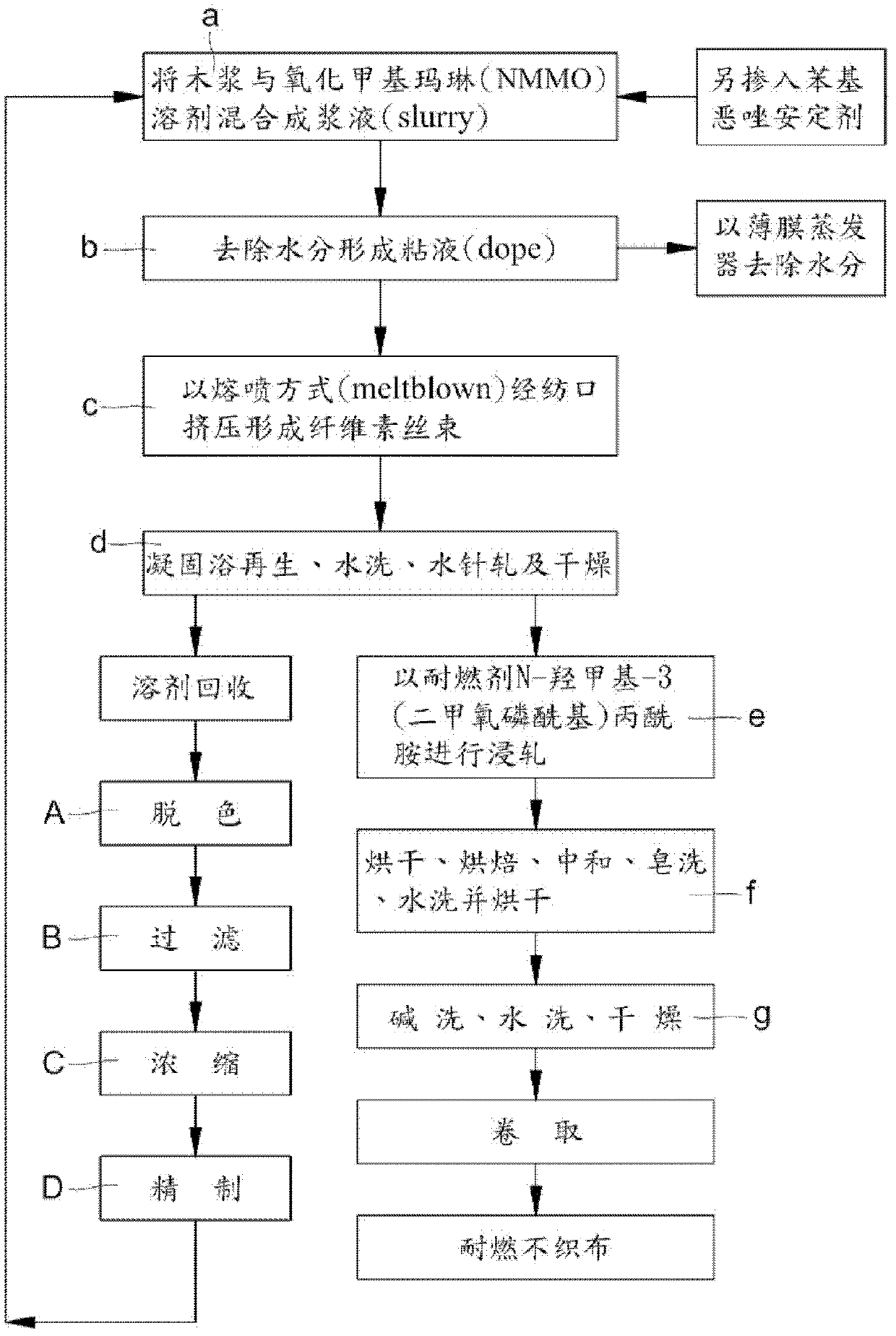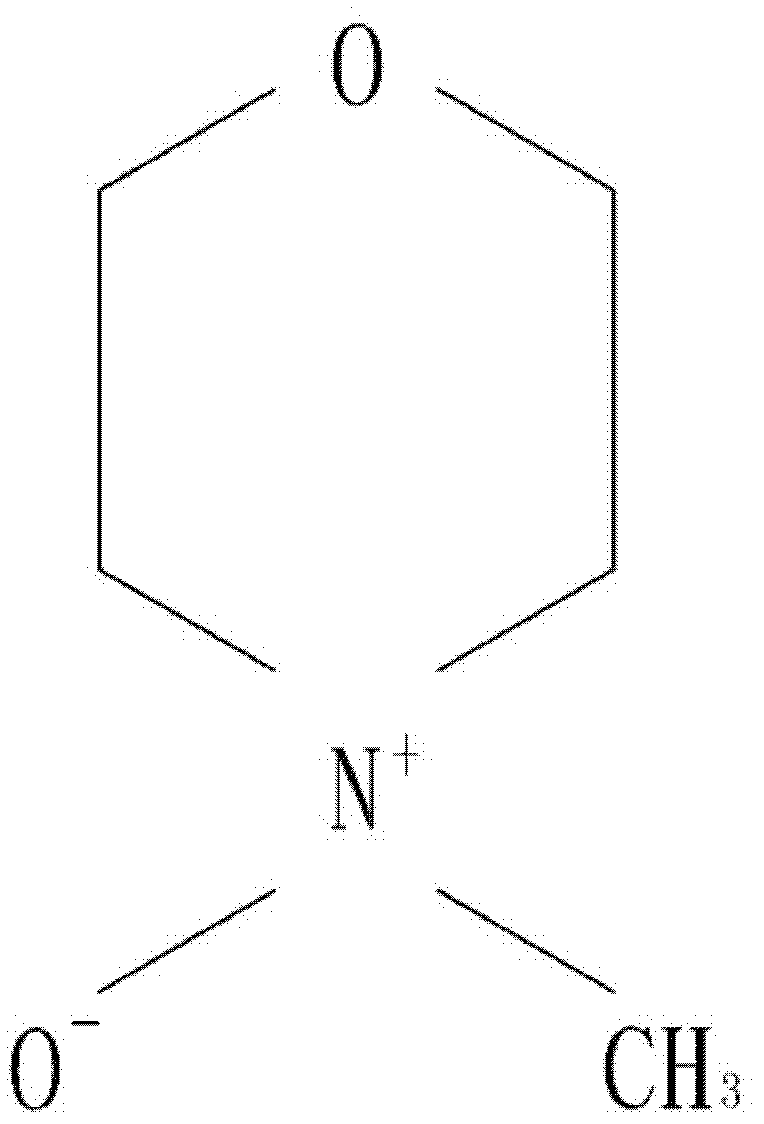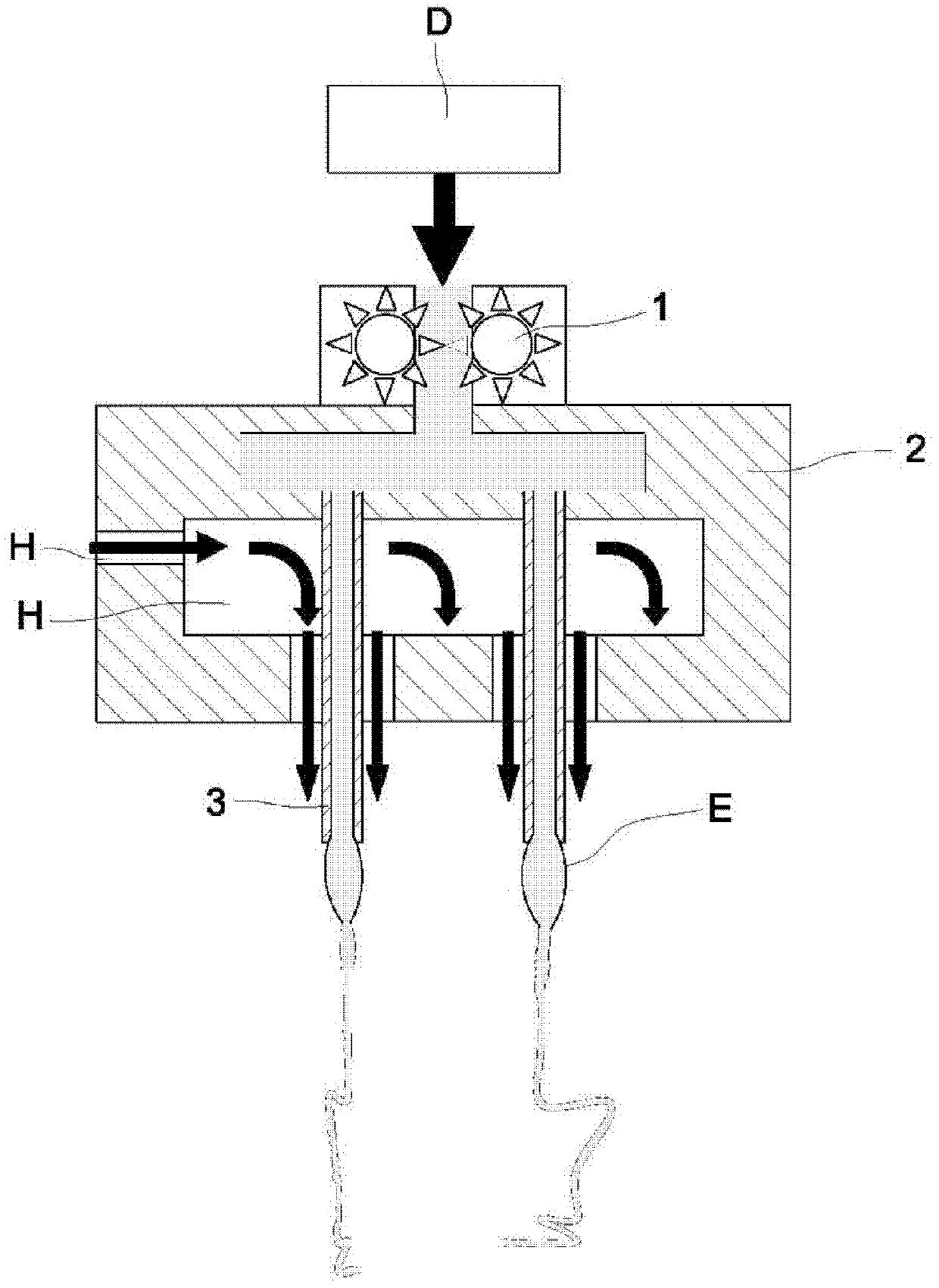Preparation method for natural cellulose melt-blown non-woven fabric with burning-resistant function
A technology of natural cellulose and melt-blown non-woven fabrics, which can be used in dry-cleaning fiber products, single-component cellulose rayon, fiber processing, etc., and can solve the problems of non-natural degradation of waste and environmental pollution.
- Summary
- Abstract
- Description
- Claims
- Application Information
AI Technical Summary
Problems solved by technology
Method used
Image
Examples
Embodiment 1
[0041] Embodiment 1 (sample numbers D1~D6 and F1~F6 of the present invention):
[0042] Mix wood pulp cellulose with a degree of polymerization of 650 and oxidized methyl marlene (NMMO) solvent to form a slurry, and add different proportions of phenyloxazole (1,3-phenylene-bis 2-oxazoline, BOX) to stabilize Then use a vacuum thin film evaporator to evaporate excess water, heat at 80°C to 120°C, and remove the water to 5% to 13% within 5 minutes to dissolve the cellulose into mucus ( dope), the mucus composition table is shown in the sample numbers D1-D6 in Table 1, and then the mucus is extruded through the spinning nozzle in a meltblown manner (meltbrown) to form cellulose tow, and water mist is sprayed to solidify the cellulose tow After regeneration, the natural cellulose non-woven fabric is made into natural cellulose non-woven fabric by water washing, water needle rolling and drying. Carry out padding, and its rolling liquid rate is 65%~70%, this N-hydroxymethyl-3-(dimet...
Embodiment 2
[0043] Embodiment two (sample numbers D7~D12 and F7~F12 of the present invention):
[0044] Mix wood pulp cellulose with a degree of polymerization of 1050 and methyl marin oxide (NMMO) solvent to form a slurry, and add different proportions of phenyloxazole (1,3-phenylene-bis 2-oxazoline, BOX) to stabilize Then use a vacuum thin film evaporator to evaporate excess water, heat at 80°C to 120°C, and remove the water to 5% to 13% within 5 minutes to dissolve the cellulose into mucus ( dope), the mucus composition table is shown in the sample number D7-D12 in Table 1, and then the mucus is extruded through the spinning port in a meltblown manner (meltbrown) to form cellulose tow, and water mist is sprayed to solidify the cellulose tow After regeneration, the natural cellulose non-woven fabric is made into natural cellulose non-woven fabric by water washing, water needle rolling and drying. Carry out padding, and its rolling liquid rate is 65%~70%, this N-hydroxymethyl-3-(dimetho...
Embodiment 3
[0049] Embodiment three (flame-resistant function test):
[0050] Wood pulp cellulose with a degree of polymerization of 650 and 1050 was mixed with oxidized methyl marin (NMMO) solvent to form a slurry, and phenyloxazole (1,3-phenylene-bis 2-oxazoline, 3-phenylene-bis 2-oxazoline, BOX) stabilizer and anti-polymerization degree decay agent, and then use a vacuum thin film evaporator to evaporate excess water, heat at 80 ° C to 120 ° C, remove water to 5% to 13% within 5 minutes, and then dissolve the cellulose into Mucus (dope), and then the mucus is melt-blown (meltbrown) through the spinning nozzle to form cellulose tow, spray water mist to solidify and regenerate the cellulose tow, and then wash with water, water needle rolling and drying. Make natural cellulose non-woven fabric, this natural cellulose non-woven fabric and N-hydroxymethyl-3-(dimethoxyphosphoryl) propionamide flame retardant are pad-rolled, and its rolling rate is 65%~70% %, the concentration of the N-methy...
PUM
 Login to View More
Login to View More Abstract
Description
Claims
Application Information
 Login to View More
Login to View More - R&D
- Intellectual Property
- Life Sciences
- Materials
- Tech Scout
- Unparalleled Data Quality
- Higher Quality Content
- 60% Fewer Hallucinations
Browse by: Latest US Patents, China's latest patents, Technical Efficacy Thesaurus, Application Domain, Technology Topic, Popular Technical Reports.
© 2025 PatSnap. All rights reserved.Legal|Privacy policy|Modern Slavery Act Transparency Statement|Sitemap|About US| Contact US: help@patsnap.com



